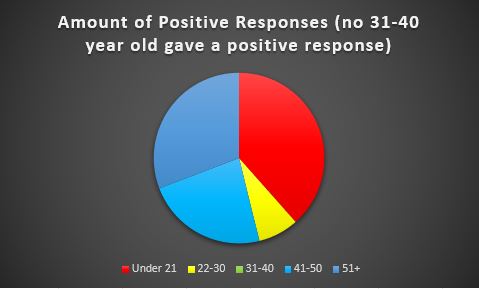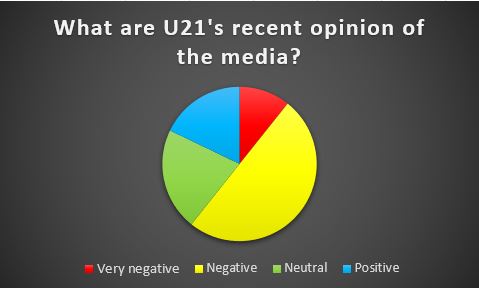
Covid-19 has existed with us for two years now and has warped our ways of life in so many ways that to list them all would be a herculean task by itself. The virus, unlike its ugly cousin Sars from 2002-2004, has brought the entire world to a screeching halt, brought about restrictions that some would only think possible in a George Orwell book, and has (possibly) irrevocably divided people into groups more akin to warring factions at the height of global-scale conflict than groups who simply disagree with one another.
Trying to pick the single most affected group during Covid is not unfair, but impossible. Every corner of our way of life has been touched, every aspect of our world altered in one way or another. But one aspect that has been consistently and constantly scrutinised under the ever-watchful magnifying glass of society is how this awful pandemic is being brought into the public eye by the media tasked with reporting on it. Deservedly or otherwise, the media has been razed by those on the frontlines of the disease, to those in the ivory towers calling the shots. But overall, through all the vitriolic screaming into the cursed void that is Planet Earth I decided to get a more direct perspective.
I sent out a Google Form that garnered 105 responses from November 30th to December 9th, and I asked what people’s opinions of the media were, as well as asking their reasoning and what events had swayed their response in one way or another, with results from a wide range of ages, careers, and the like.
After compiling the data, the most immediately clear conclusion was how recent events have negatively impacted people’s view on the media. Out of the 105 responses, only five said that their opinion had changed positively in recent times, with a staggering 28 saying their opinion was very negatively impacted. An additional 48 gave a ‘negative’ response, and 27 gave a ‘neutral’ response.

Also included on this form was an option to disclose why people’s opinion has shifted in the way that it has, with a common theme being COVID having a negative effect on people’s opinions, in addition to a consensus that those pulling the strings are prioritising negative news as opposed to positive. This trend was rife across all age groups and didn’t seem to fluctuate in a significant manner one way or another.
So, what can we draw from this? For starters, it appears that in recent times there has been a significant downtick in the media’s approval, that much is obvious. And the responses I collected reflect that the issue stems from all sorts of reasons, none of which are easily fixed. Unfortunately, the wider world simply is not in a state that can be seen as positive when all factors are considered, and this is a matter that is quite simply out of the media’s control. However, a few responses detailed that they believe that factors within the media are being twisted to suit a particular purpose, such as “scaremongering”.
However, the responses that did raise this complain did not elaborate beyond this. Conversely, a complaint that was raised often and was elaborated on was the notion that news outlets push agendas to serve whatever political lean or bias. One response said, “They only share the stories that support the views of the government.”, while another called it “propaganda”. Regardless of whether or not this opinion is correct or not, the fact that someone feels this overtly negative speaks volumes about how fractured the relationship between the media and the public has become.
Alternatively, the other side of that coin, while not as well-voiced in my responses, still had praise for the media, with one person, a 25-year-old military officer who wished to remain unnamed, said the media had “Relatively reliable and informative, despite respective political leanings”. Another positive message came from a 47-year-old HR Administrator, who said “I believe that there is a good variety of broadcasters and enough information out there to help you establish a balanced view of the stories in the news.” Both of these responses said they use the name means of accessing media, being social media and TV.
Speaking of social media, a staggering 91 out of the 105 stated that they use social media in some capacity, further showing just how powerful online media is. This surge could be a more dated rise, but could also speak volumes about how prevalent, and powerful, social media has become in our society. With platforms such as TikTok skyrocketing to unprecedented amount of usage, news companies are latching onto these platforms in order to deliver this content, and thus mass media and these platforms are becoming even more intertwined.
Another key point I drew from my data, and a point somewhat addressed earlier, was the lack of polarisation between age groups. Each age category I used, these being Under 21, 22-30, 31-40, 41-50 and 51+, all had surprisingly consistent division between negative, very negative, and neutral. However, the biggest tell of this is how consistently low the ‘positive’ response rate is.

13 out of 105 is, quite frankly, startlingly low. Compared to a near 50% negative response rate, it is so clear that, through factors outside and inside their control, the media’s relationship with the public is fracturing. And in a time when the whole country seems on the absolute precipice, what with Omicron, legally dubious Christmas parties and the like, this fracture could not be coming at a worse time.
Well, where there is a problem, there is a solution.
So what solutions could be deployed in order to mend this divide in a time when, more than ever, we need to be working together? A common complain that was raised throughout my survey was a perception that a lot of news had fallen victim to “sensationalism”, particularly in regard to inherently negative news stories.
A simple way to fix this problem would be to just…stop.
Now of course that is easier said than done, as every story needs some degree of sensationalism to ‘pitch’ itself to the public as it were, but there must be a balance. Yes, sensationalism encourages the forgoing of accuracy in exchange for provoking engagement and excitement, but simply displaying informative content in an accurate and fair manner should be enough to pique interest, as long as the topics and content chosen is up to par.
But this notion that news has to be aggressively filtered through in order to find ideal content, as outlined from my responses, proves that the current climate simply favours exaggeration and sensationalism, particularly with more tabloidesque publications.
Herein lies the issue. Simply preventing these publications from being allowed to make content is very illegal very obvious reasons, barring any freak incidents. And it is clear that simply filtering through to find desirable content is no longer an attractive option, as the responses that brought this up seemed tired of the process.
Unfortunately, there can be no concrete solution.
Everybody perceives negativity in a different way, everybody moves past it in a different way, so the only definitive answer I can regrettably give is that there is no answer.
A group I was particularly excited to get opinions from were students, as COVID, among other things, has placed students up and down the country in an extremely unfavourable spot. The lockdowns that struck during the university year caused havoc on many students and their lifestyles, so I was interested to see if they had any adverse relations to the media in regard to this.
Needless to say, I was not disappointed with the responses.
25 students in total gave a response, with 19 of those being Under-21. A total of 14 responses were ‘negative’, with three of those being very negative, along with six neutral responses, and five positives.

Among these positives, there were concessions that it is not all well, as there were mentions of “outdated practises and specific people that let the side down.” However, there was no mention of specific people or publications. A neutral response said, “Some things can be good, a lot more things can be really negative – it’s about the choice of what you consume as the end user”.
This raises an important question about the responsibility of the consumer in this dynamic, are the readers just as at fault for the peddling and sharing of sensationalism? Or does the responsibility fall solely on those producing it?
Again, no clear cut answer. It simply depends on where you stand on a myriad of issues.
However, while there is no definitive answer, there can be trends, and a general consensus among the public, which is what I set out to find when I created the survey. The weight towards negativity gives a clear insight into what trends are rife among the public in this current climate. Needless to say, relations are strained. And with more and more being heaped onto this strain, it is unclear what exactly the future holds, and whether this innate divide will heal or hurt more with each passing day.
